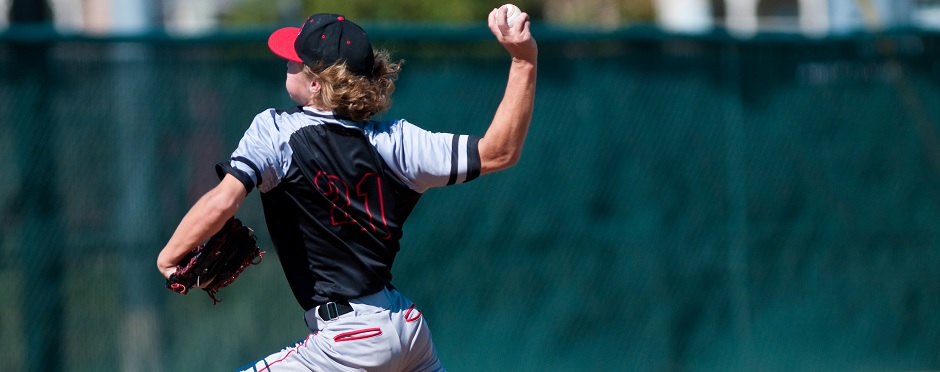
9 Exercises to Help Overhead Athletes Prepare for their Season
Leave a CommentOverhead athletes are required to have tremendous strength and stability in not only their shoulder, but their entire body. The forces that go through the shoulder during a pitching motion are some of the highest that occur within the sports realm, with the fastest motion recorded at over 7000 degrees of rotation per second (that equates to 20 full arm revolutions in a second). It makes sense that these forces require tremendous strength and stability throughout the whole body (often referred to as kinetic chain with throwing), and special care for the arm is to be taken through all seasons of play. What follows will be exercises and stretches that are key to helping provide strength and stability required for throwing.
1. External Rotation
This can be performed in many ways, either with a dumbbell or resistance band, and both have their pros and cons; my suggestion is to do both with your training program. This exercise will help strengthen the muscles of your shoulder responsible for external rotation and the deceleration phase of throwing. The stronger your “brakes” are, the faster you can go. The main cue for this exercise is slow and controlled reps as this is an endurance muscle group and responds best to this type of training. Using a towel roll as shown helps to isolate the external rotators more efficiently.
- Slowly rotate your arm out to the side and back to the middle while maintaining a tall posture with a broad chest.
- 2-3 sets of 15-20 repetitions is good for targeting this area.
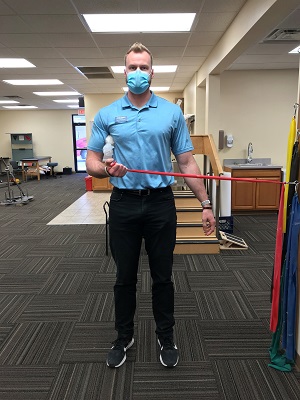
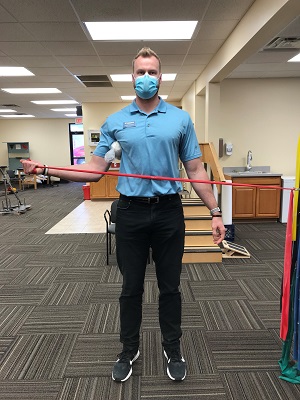
2. Prayer Stretch
This is a great exercise to work on thoracic extension or the ability for the spine in the shoulder region to move into a lengthened position. This is important for injury reduction in throwing athletes because it helps stabilize shoulder range of motion through the shoulder blade with throwing.3 Take your time “sinking” into this stretch, and don’t force yourself into any position that feels wrong or uncomfortable.
- Sink your head and upper body through your arms until you feel a mild-moderate stretch in the area just below your armpits.
- Holding for 30-60 seconds at a time, do 3-5 total stretches in this position.
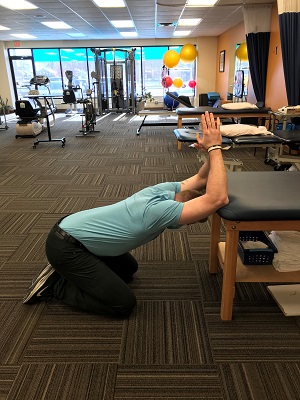
3. D2 Flexion
Another exercise in the series to work on scapular strengthening and control of the external rotators of the shoulder, this time in a position that mimics overhead throwing, is the D2 Flexion. This exercise should make a long “arc,” really reaching away from your body through the motion, when performing and be done in a slow and controlled fashion. You should think about performing this exercise by using your shoulder blade instead of your arm for improved control and muscle activation.
- Pull your arm away from your body as you pull it up into a 45 degree position by your head.
- 2-3 sets of 15-20 repetitions is a good starting point.
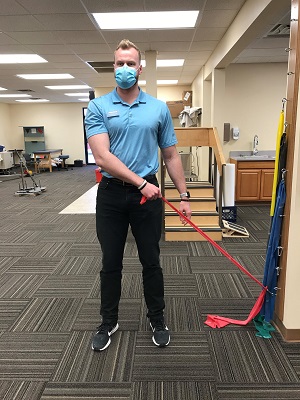
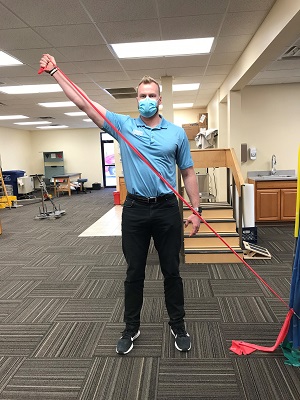
4. Modified Sleeper
Loss of internal rotation of the shoulder is often seen in overhead athletes, losing up to 20 degrees of motion or more.1 This loss of motion is one of the suggested reasons for shoulder injuries. Performing this stretch will help to improve shoulder internal rotation in overhead athletes. The key is not to rollover directly onto the shoulder, but rather feel more of the pressure laying on the shoulder blade. The athlete will then grab their arm and pull away from their body and using their elbow to push their hand down into a stretch as shown.
- Using your elbow, push your hand down towards the table and your hips until you feel a light stretch deep in the back of your shoulder.
- 5 repetitions holding for 20 seconds is a good point to start at.
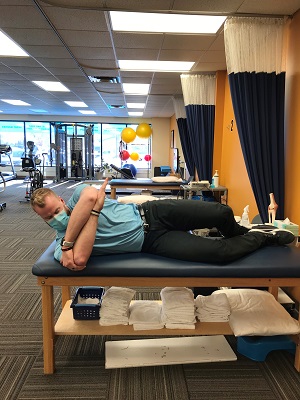
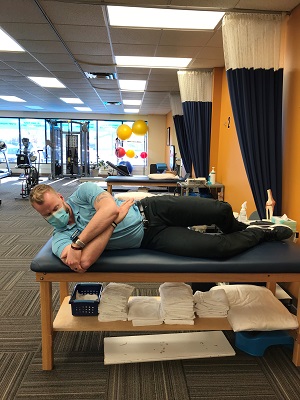
5. Thread the Needle
Thoracic motions mainly move in a rotation-like fashion, with the vertebrae showing more rotation left to right vs through extension and flexion (though these are still important to the thoracic spine motion). This exercise will help gain and maintain thoracic rotation. The main cue is to sit back onto your heels in a hands and knees position, then slowly going through the motions shown to feel deep stretches in both the start and end position.
- Slowly move through each position shown, and take 1-3 deep breath at the start and end position.
- A set of 15-20 repetitions per side should suffice.
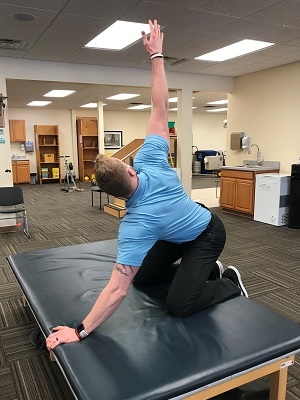
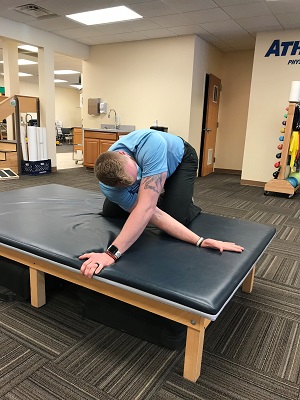
6. Bulgarian Split Squat
Much of the throwing motion relies on single-leg strength, control, and power. It only makes sense to do some type of single-leg strengthening movement. Bulgarian split squats are great for their ability to strengthen an increased range of motion, and are great to target the quadriceps and gluteal muscle groups. Ideally, using some type of resistance for this motion will benefit you more than just bodyweight-only work. Dumbbells and barbells are perfect for this if you have access to them.
- Push your buttocks back as you squat down on one leg, and maintain a tall posture. Hold the bottom position for 1-2 seconds before standing up to the starting position.
- Do 3-4 sets in the 8-12 repetition range to get started.
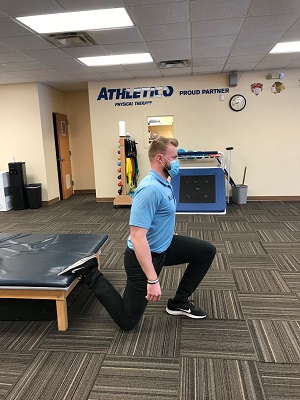
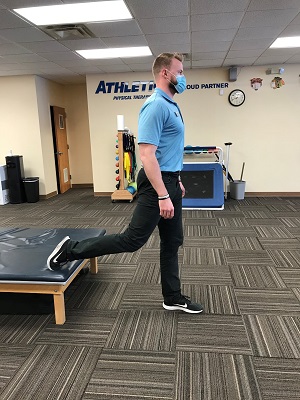
7. Body Saw
Core strength is important to linking the power the lower body generates to the arm finishing the pitch. In the process of this transfer of power, the core can even be utilized to increase the speed of a throw, as well. Not only is core strength important, core control and mobility are equally as important as well. The body saw stretch will help in increasing core strength, stability, and mobility.
- Keep a tight squeeze in your glutes, thighs, and abs as you use your arms to push back as far as you can without losing the neutral pelvic posture shown.
- Do 2-3 sets of 10-30 seconds of slow movements.
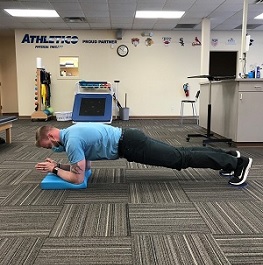
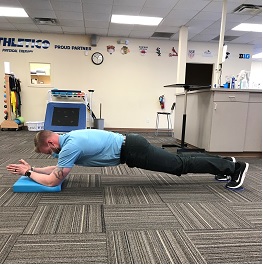
8. Resistance Side Stepping
Throwing involves large amounts of lateral movement of the legs (frontal plane motion, for scientific terms). Strengthening exercises should be performed in this plane of motion, as well. Sideways stepping is a great way to target the muscles of the hip in this fashion.
- Maintain an athletic stance while moving side to side, keeping distance between your feet at all times when performing the exercise. Slow movements are preferred.
- Do 3-5 trips of 25 ft with a strong resistance band.
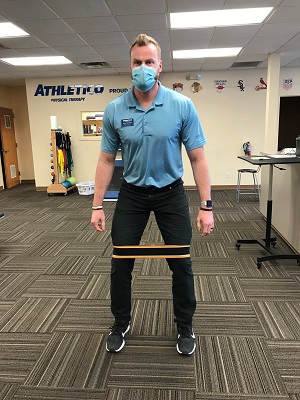
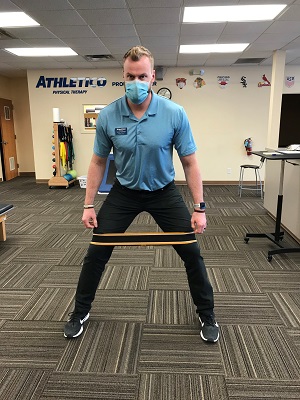
9. Single-Leg Jumps
To piggyback of an earlier exercise, developing single-leg strength is important, but developing single-leg power is just as important. Doing plyometric (jumping) activities with one leg instead of two can go a long way in helping develop power and control in your lower body. Make sure to spend time working on jumping forward, and jumping to the side as indicated by photos below.
- Do a partial squat before either jumping forward or to the side. Land with a soft knee and hip, and try to maintain the landing position for 3 seconds before performing another repetition.
- 2-4 sets of each, doing 3-5 repetitions to avoid mechanical changes caused by fatigue.
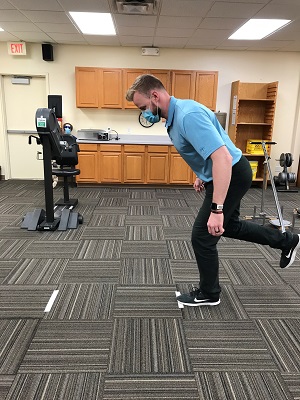
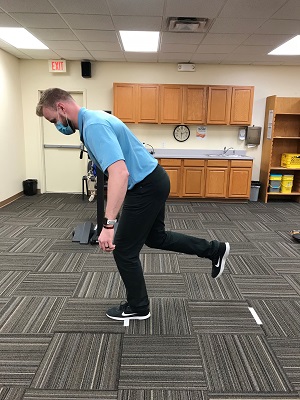
Jumping forward
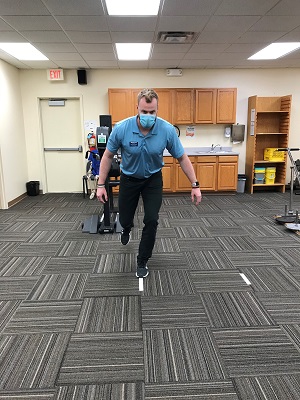

Jumping side-to-side
These exercises can be used to increase your performance as well as reduce your risk of injury. If you are in need of a more comprehensive training plan, or are currently injured, please reach out to your local Athletico and schedule a free assessment today. Free assessments are available in-clinic and virtually through our Telehealth platform.
Physical therapy is usually the thing you are told to do after medication, x-rays or surgery. The best way to fix your pain is to start where you normally finish – with physical therapy at Athletico.
The Athletico blog is an educational resource written by Athletico employees. Athletico bloggers are licensed professionals who abide by the code of ethics outlined by their respective professional associations. The content published in blog posts represents the opinion of the individual author based on their expertise and experience. The content provided in this blog is for informational purposes only, does not constitute medical advice and should not be relied on for making personal health decisions.
References:
1. Shoulder Injuries in the Overhead Athlete, Journal of Orthopaedic & Sports Physical Therapy, 1 Feb. 2009, www.jospt.org/doi/10.2519/jospt.2009.2929.
2. Burkhart SS, , Morgan CD, , Kibler WB. and The disabled throwing shoulder: spectrum of pathology Part III: The SICK scapula, scapular dyskinesis, the kinetic chain, and rehabilitation. Arthroscopy. 2003; 19: 641– 661.
3. Suzuki, Y., Muraki, T., Sekiguchi, Y., Ishikawa, H., Yaguchi, H., Suzuki, Y., … Izumi, S. I. (2019). Influence of thoracic posture on scapulothoracic and glenohumeral motions during eccentric shoulder external rotation. Gait Posture, 67, 207-212.
